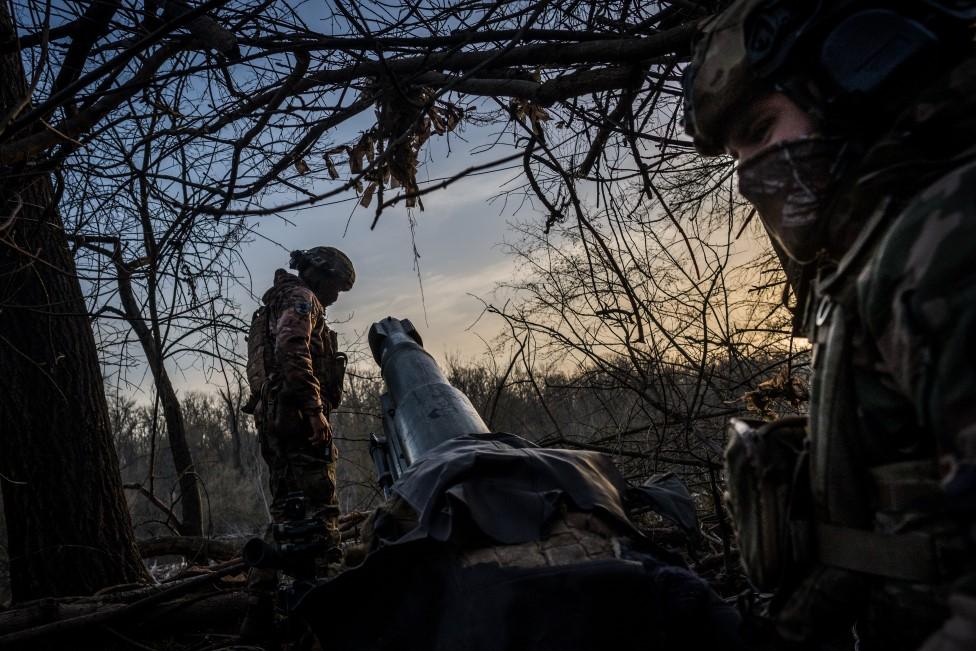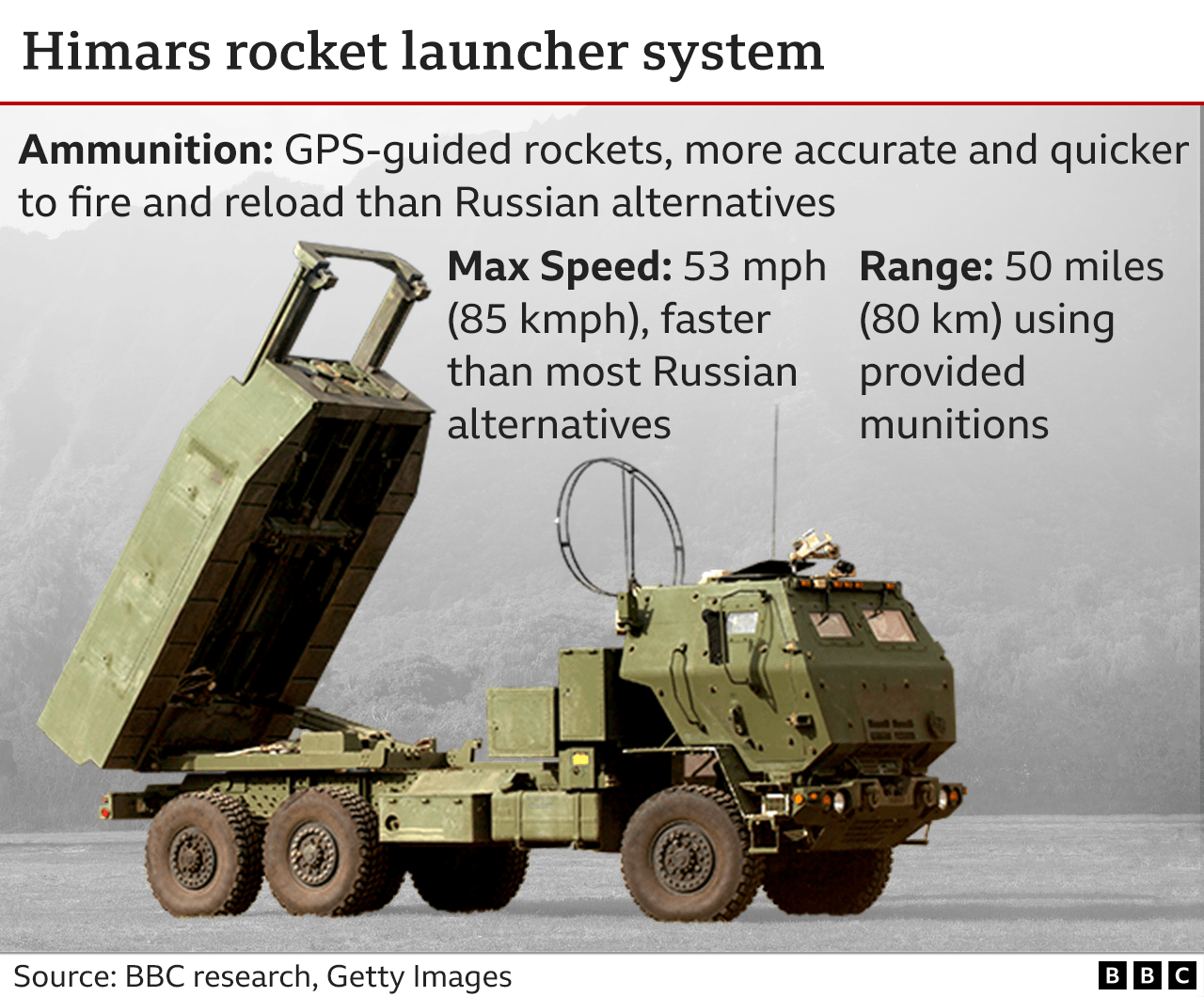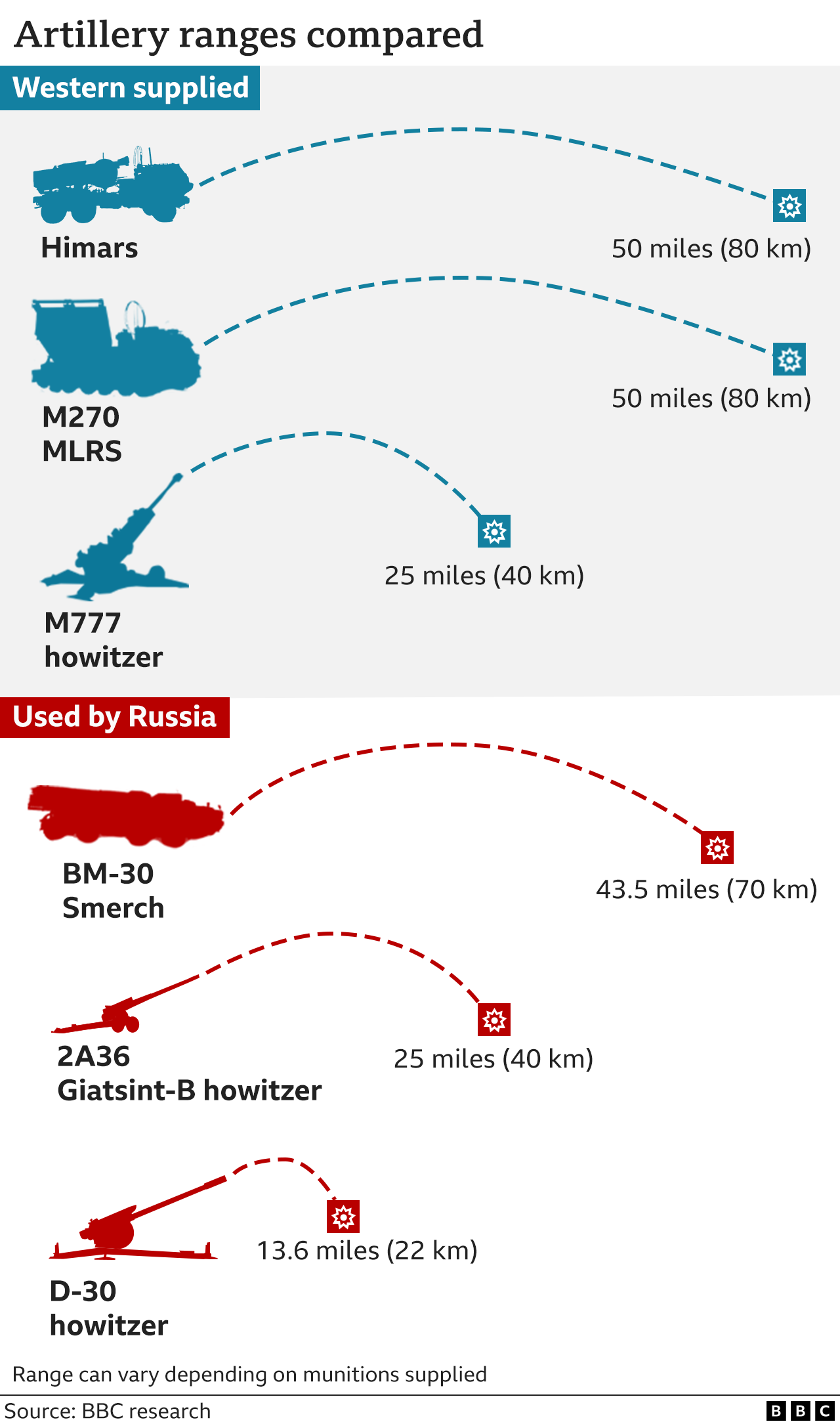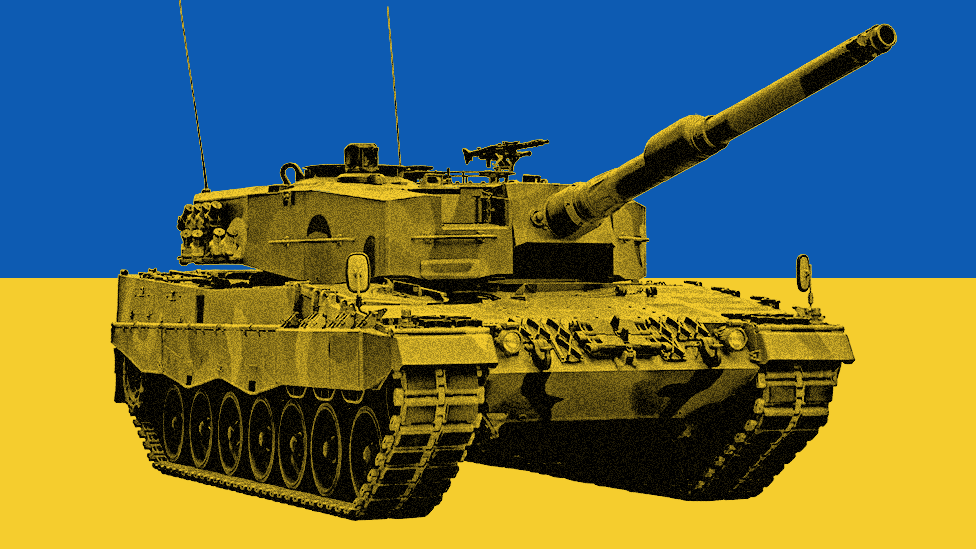What $61bn US aid boost could mean for Ukraine
- Published

A $61bn package of military aid for Ukraine has been passed by the US Senate and is headed to President Joe Biden's desk to be signed into law. So what weapons might Ukraine receive and what difference could they make in trying to stem Russian advances?
The most pressing weaponry needed by Ukraine falls into three categories: air defence systems, mid to long-range missiles and artillery shells. Here is where the US aid could go in these areas.
Air defence
Repelling the Russian threat from the skies is vital for the protection of cities and critical infrastructure such as energy plants.
Last week Ukrainian President Volodymyr Zelensky said his country had been attacked by almost 1,200 Russian missiles, more than 1,500 drones and 8,500 guided bombs this year alone.
Ukraine has a variety of western-supplied systems ranging from shoulder-launched Stinger short range missiles all the way up to the advanced - and extremely expensive - Patriot system. Zelensky said at least seven more Patriots, or their equivalent, were needed.


Russia's cruise and ballistic missiles - including converted S-300 and S-400 surface to air missiles - along with hundreds of Iranian-made Shahed-136 drones - are difficult to counter because of the sheer volumes launched.
A classic tactic to overwhelm air defences is to swamp them with targets, thereby occupying their acquisition and tracking radar systems and depleting missile stocks.
Mid to long-range missiles
But the war on the ground is vital. Since October, Ukraine has lost nearly 583 square kilometres (225 square miles) of its eastern territory to Russian forces, largely because of a lack of artillery.
High Mobility Artillery Rocket Systems (HIMARS) have played a crucial role for Ukraine, by delivering guided munitions from a mobile platform.
Arrive at location, set-up, fire and quickly move on before Russian forces can locate and attack the launcher. Expect more HIMARS capability in Ukraine, and perhaps a commitment for more tanks and Bradley infantry fighting vehicles.


Significantly, the long-range version of the US Army Tactical Missile Systems (ATACMS) has recently arrived in Ukraine.
Older ATACMS systems have been in the country since late last year, but the newer version can double ranges to 300km (186 miles). It takes the fight deeper into annexed Crimea, which Russia uses as a major naval base protected by air assets, and beyond.


Artillery shells
And let's not forget bread-and-butter weapons. M777 howitzers need to be fed a continuous diet of 155mm artillery shells.
The United States has sent 2,000,000 such shells to Ukraine since February 2022 and more will likely be sent in this latest package.


The United States has what it calls a "very robust logistics network" to get arms there quickly - within days, it says.
Supplies are likely to have been moved closer to Ukraine, and once they are handed over they officially become the property of Ukraine.
But getting the gear to the frontline - the artillery equipment particularly - could take many days or even weeks, as Russian forces continue their pounding in the east.
Last week, Russia said it would increase the intensity of strikes on logistics centres and storage depots holding Western weapons.
...and F-16 fighter jets
These pre-date this tranche of cash but are notable now because they are close to coming into service.
Ukrainian pilots and crews continue their conversion training to western F-16 jets, currently in Romania. These multi-role aircraft provide a stronger air-to-air and air-to-ground capability, thereby potentially improving Ukrainian air defences.
Denmark, the Netherlands and the US expect to deliver the first of dozens of "Vipers" to Ukraine within months. The jets won't be a game-changer but another significant arrow in the quiver for Kyiv.
Moscow has been dismissive, saying the F-16s wouldn't make much of a difference on the battlefield and would be shot down by Russian forces.
Related topics
- Published20 April 2024

- Published17 February
